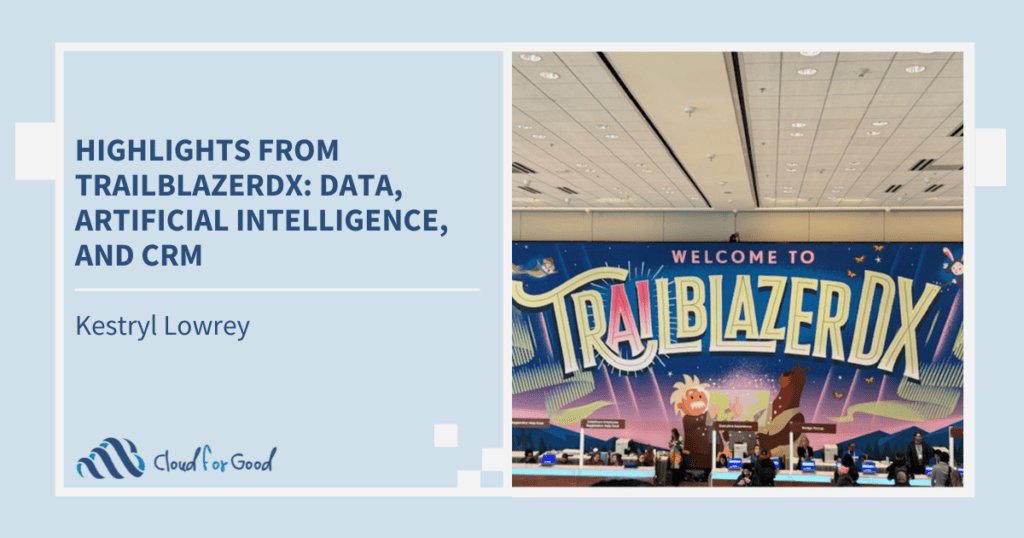There are many blogs out in the Salesforce ecosystem about being an Admin, a Developer, a Partner or other Salesforce Professional, but very few to provide tips and tricks to the Users and Stakeholders. Not any more!
With Dreamforce 2015 celebrating the Salesforce Awesome Admin, we thought it would be timely to share with our fellow Users and Stakeholders some tips and tricks to celebrate your Salesforce Awesome Admins and improve your own influence on the evolution of Salesforce systems that affect your work and life every day. How cool is that?!
So, how do you know if you are among the esteemed group known as Users and Stakeholders?
Honestly, you are likely a User or a Stakeholder if you are anyone in or affiliated with an Organization, including an Organization’s Employees, Partners, Vendors, Customers or Volunteers, who, in one way or another, also use the Organization’s Salesforce platform.
As a User or Stakeholder, you might, for example, be a Customer Service Rep managing internal or customer cases, you might be a Partner helping an organization with sales or fundraising, you might be a Manager or Executive monitoring queues and reports, you might be a Customer managing your own Account, Contacts and Cases, or you might be a Volunteer managing your volunteer interests, availability and hours.
You may be thinking to yourself, “Well, I have no configuration permissions in Salesforce so how can I have any impact on the system at all?”
Not to fear! As a User or Stakeholder, you can have a great impact on the evolution of the organization’s Salesforce system by providing feedback and enhancement requests to the organization’s System Administrator(s) in a clear, concise manner. There is, of course, no guarantee for any of us that we will get everything we ask for, particularly not right away. As the saying goes, it doesn’t hurt to ask and the worst outcome is no change at all.
Now, as Users and Stakeholders, you might be asking yourself, “Ok, so where do I begin?”
Just as the lovely Julie Andrews reminded us (in a well-loved movie whose name I cannot reveal for copy-write reasons), we start with the basics – A,B,C, 1, 2, 3 and Do, Re, Mi.
Now, a common misconception of Users and Stakeholders when documenting requirements and Use Case scenarios is to put to paper every single ask that comes to mind regarding the new feature or functionality being requested. I often tell Users and Stakeholders to consider real-world examples when providing requirements and Use Cases such as:
- When I am looking to buy a home, I am going to tell the Realtor to look for requirements such as a fenced-in yard, a fire pit, a wrap-around porch, a 2-car garage, location within a mile of a grade school and within walking distance to a commuter train (you only make that mistake once!), 2-stories, 3+ bedrooms, 2+ baths, granite counter tops and hardwood floors. It is unnecessary for me to tell the Realtor that I need the doors on the house to lock, the thermostat to have a range of 60-85 degrees or that I need grass in the yard.
- When I am looking to buy a vehicle, I am going to tell the Dealer to look for requirements such as seats up to 6, has a sun-roof, a foot-activated hatch, GPS with real-time updates, is a Hybrid and that I will be using it to commute 30 miles round-trip Mon-Thurs every week. With these requirements, I do not need to tell the Dealer that the vehicle must have seat-belts, windshield wipers nor a radio, though I may want to specify a preference for a standard versus satellite radio.
Makes sense, right? So how can Users and Stakeholders translate this to Salesforce and our Awesome Admins?
As Users and Stakeholders in Salesforce systems, we want to provide our Salesforce Admin(s) with similar thought and logic when providing requirements and Use Cases for our enhancement requests.
Here are a few examples of important information that your requirements and Use Cases might include:
- A list of the types of Users that you expect to be able to use this feature such as “Internal Sales Reps,” “Partner Community Users,” “Customer Service Managers” or “Financial Team Managers and Executives.”
- A brief explanation of the problem or issue that is to be solved such as “Managers have no visibility into the number of open Product Issues Cases we have for each product that we support” or “The sales team has no notification when Leads are added by our Partners through the Community” or “The Donor Development Team has no historical trending analytics of donations by Channel and Source.”
- A Use Case that states, in simple (preferably bulleted) terms, the current process used to address this lack of feature/functionality such as, “A Manager prints out a weekly report of Donations grouped by Channel and Source to Excel, adds the new Excel Sheet to an Excel Workbook and updates all of the historical trending formulas and charts in the Workbook to include the new Excel Sheet.” or “A formula field was added to Leads in order to collect the Created By User’s User Type and then a List View was created to filter on this formula field including the string ‘Partner’ so that Sales has visibility into Leads created by a Partner.”
- A Use Case that states, in simple (preferably bulleted) terms, the desired process going forward…don’t tell the Salesforce Admin how to build the solution, just tell them what you need. For example, “We want historical trend reporting within Salesforce to show us the month-over-month trend of our new Donations that we can group by Channel and Source.” or “We want a new Chatter message to be created in the ‘Partner Leads Follow-up’ Chatter Group every time a new Lead is created by a Partner Community User.”
- If the change is for analytics, provide samples of what you are producing today and a legend or key to explain how formulas and charts are calculating; however, please do keep in mind that a picture is not always worth 1,000 words.

We cannot tell from this picture how deep this house is, what condition the sides and back of the house are in, how old the roof is, if the sump-pump in the basement works, how often the lawn needs to be treated for crab grass, if there is a junk-yard in the back of the house, what the neighborhood is like and many other questions that a potential buyer would need to know.
Show your love with these quick and easy tips and we are sure that you will become #1 in your Salesforce Admin’s heart and increase your own influence within your Salesforce system’s evolution!
You may also be interested in reading the following posts:





